Why Inventorying Geological Specimens Matters
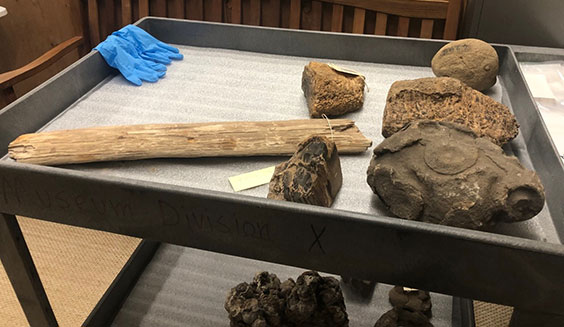
Some of the rocks and petrified wood in my inventory.
Outside in the natural environment, you will often see rocks on the ground or sticking through the surface. Rocks and the things found inside them, such as fossils, are important to the world and to scientific communities because they contain a record of the Earth’s history and the life that populated it. Through rocks and fossils, we can read how the Earth and its environment changed, how the continents moved, and how life has developed over time. We can even examine natural disasters. For this reason, many museums house rocks to safeguard them and the information they hold. One of the most important parts of preserving that information is the process of a detailed inventory.
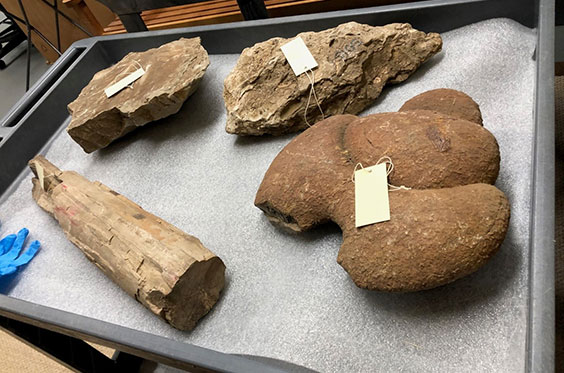
Rocks and fossils form in a variety of ways, as demonstrated by these specimens of concretions, petrified wood, and other fossils.
To perform a detailed inventory, I first removed the rocks from the collection so they could be examined more carefully and described in greater detail. I then opened their database records and went through each field to update and correct any information that was missing or incorrect. Next, I examined the rocks and fossils to ensure there was nothing severely wrong with them; a few were shedding dirt or splinters since these had not been coated to keep loose pieces on the specimens. Once the records were mostly complete, I photographed the rocks so that their records would show what they looked like, making them easier to find in the future.
One of the most important things to know about a rock specimen is where it came from (i.e., site, latitude/longitude, and formation). This allows us to identify its age and specific type. Having this data also provides more researchable information about what geological and environmental processes were occurring on Earth at the time of the rock’s formation. I checked the donation files for site information before doing extensive online research to complete the collection site and paleontology or geology fields in the database.
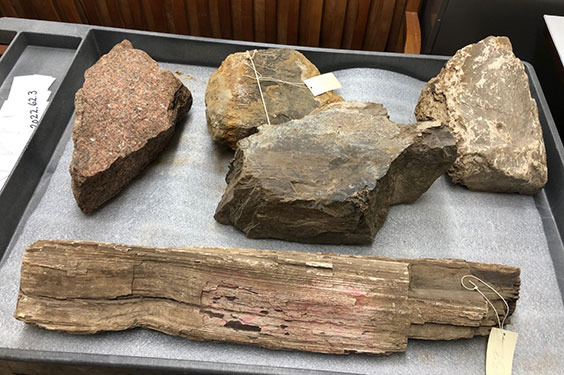
Depending on their use, rock and fossil specimens are defined as either artificial (think arrowheads, building materials, and statues) or natural (unmodified by humans).
The diversity of rocks and fossils found in North Dakota is truly amazing, and I got to experience that firsthand during my inventory of the rocks held by the State Historical Society. I found sandstone, granite, mudstone, limestone, petrified wood, plant and animal fossils, and fossils that were a combination of plant and trace fossils.
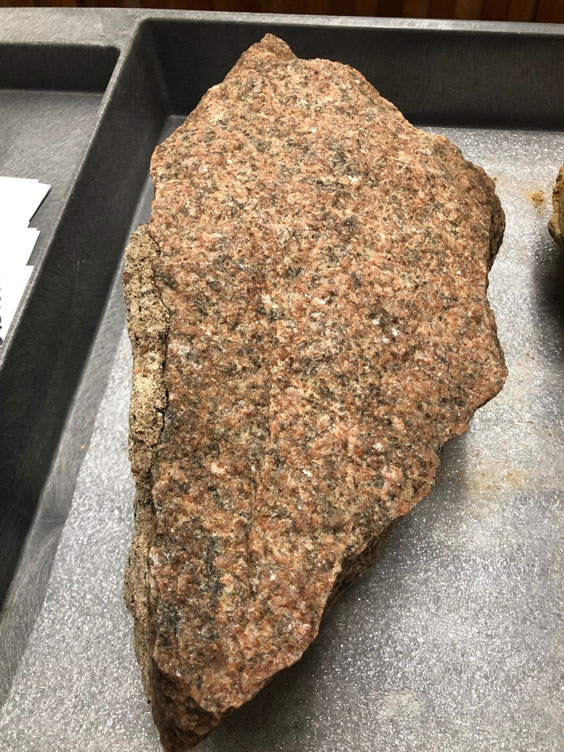
Quartz syenite riprap from Fort Abraham Lincoln State Park in Mandan. Riprap are large rocks used to protect structures at shorelines from weathering and erosion.
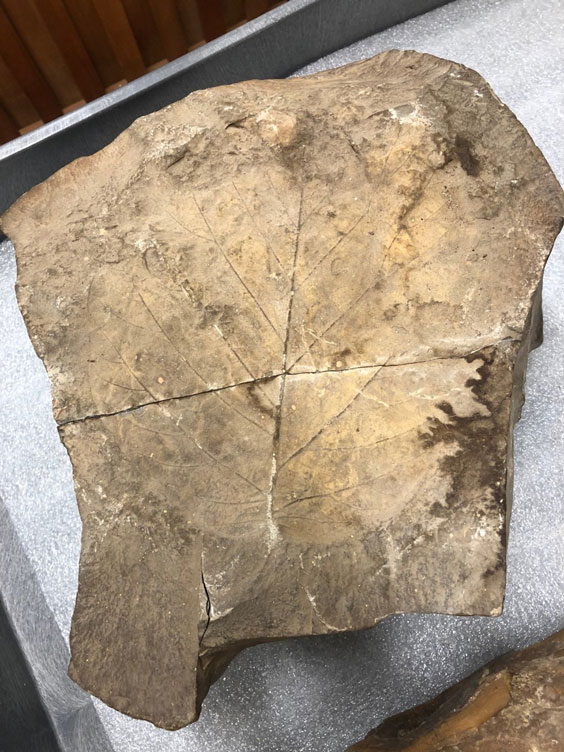
Leaf fossil in a sandstone collected in North Dakota from a rock formation in the Fort Union Group, which formed during the Paleocene epoch (66 to 56 million years ago).
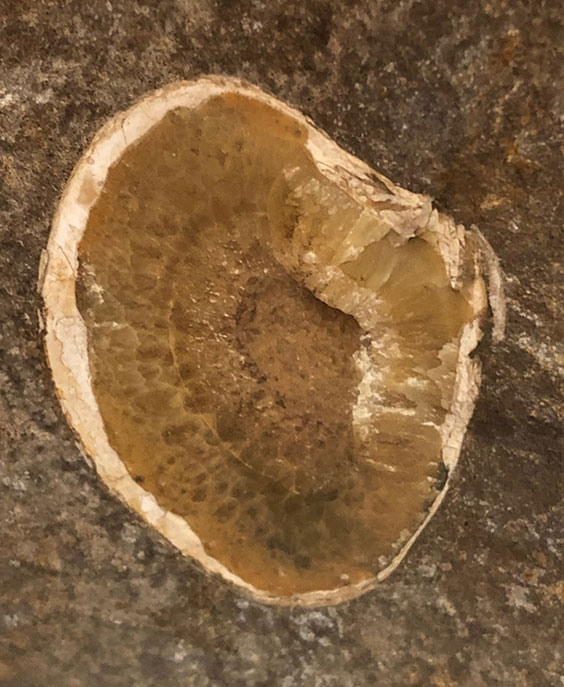
Clam fossil with mineral formation inside the cavity found at Long Butte, North Dakota, in the Sentinel Butte Formation. This specimen is from the Thanetian Age in the Paleocene epoch (59 to 56 million years ago), a time when North Dakota was covered by the ocean.
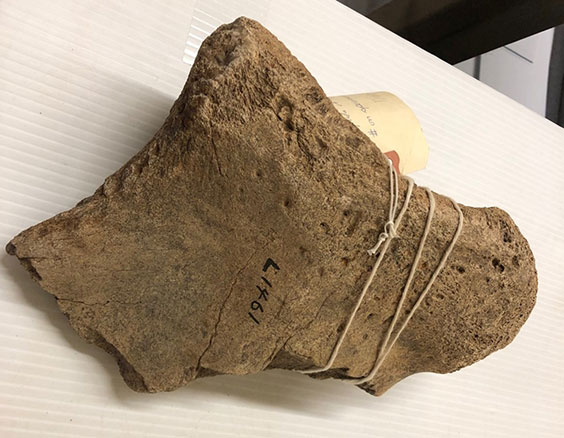
Looking for information on this scapula from a mammoth or mastodon turned out to be quite the scavenger hunt. The reference number on it was incorrect (the number actually belonged to a serving ladle), and we searched for days through the digital and physical records to find any trace of the object in the museum’s recorded history.
I have a geology background, which made this inventory especially exciting for me. One of the most interesting and coolest fossils I found in my inventory was a mudstone with opalized ammonites embedded inside. This occurs when silica spheres in the rock are slowly moved through the cracks of the shell replacing the organic material. These leave behind opal giving the fossils an iridescent quality not evident in most other minerals.
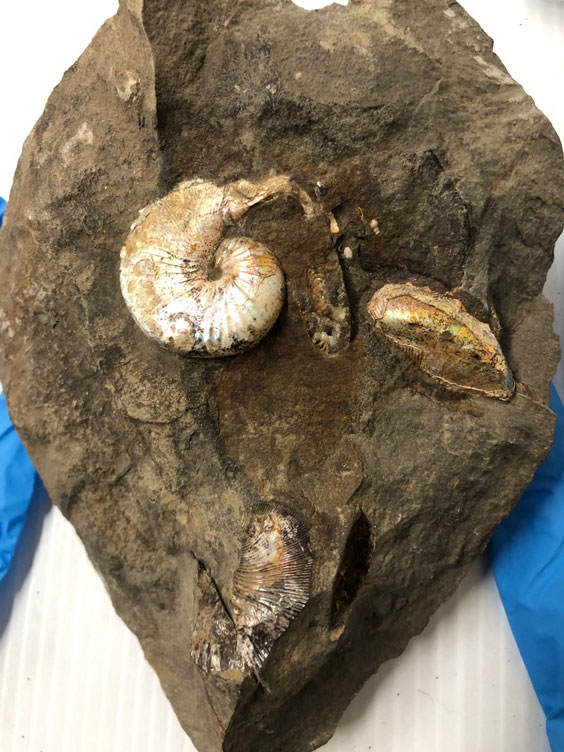
Opalized ammonite fossils inside gray mudstone.
Another fascinating fossil was the North Dakota state fossil, Teredo petrified wood, which results when a tree is living in an aquatic or semi-aquatic environment and becomes infested with Teredo worms. As the landscape changes and the tree dies, the wood petrifies, and the worm tunnels are evacuated. While petrification is occurring, minerals become trapped in the tunnels and leave behind permineralized trace fossils where the worms burrowed.
Permineralization occurs when tiny mineral pieces seep through the cracks and fill all the holes and crevices within the fossil, surrounding rather than replacing the organic material. Trace fossils are the tracks, trails, and tunnels left behind by organisms. When a tunnel gets filled with minerals from the surrounding rock, it becomes a permineralized trace fossil.
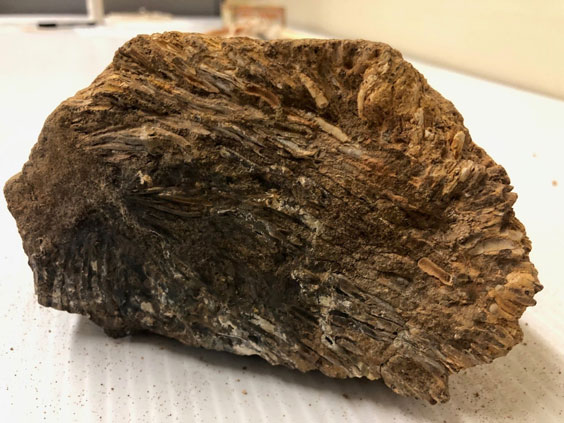
Teredo petrified wood is North Dakota’s state fossil.
An inventory can reveal the wonders of the objects that are in the museum collection. Even more fascinating is an inventory about rocks and fossils since it gives you the chance to read the history of the region and the planet. The rocks tell us that North Dakota used to be a marine environment before the water retreated and became a swamp that eventually dried out and transformed into the grassland of today. Rocks and fossils need to be preserved so we can continue to study our world’s rich history.

